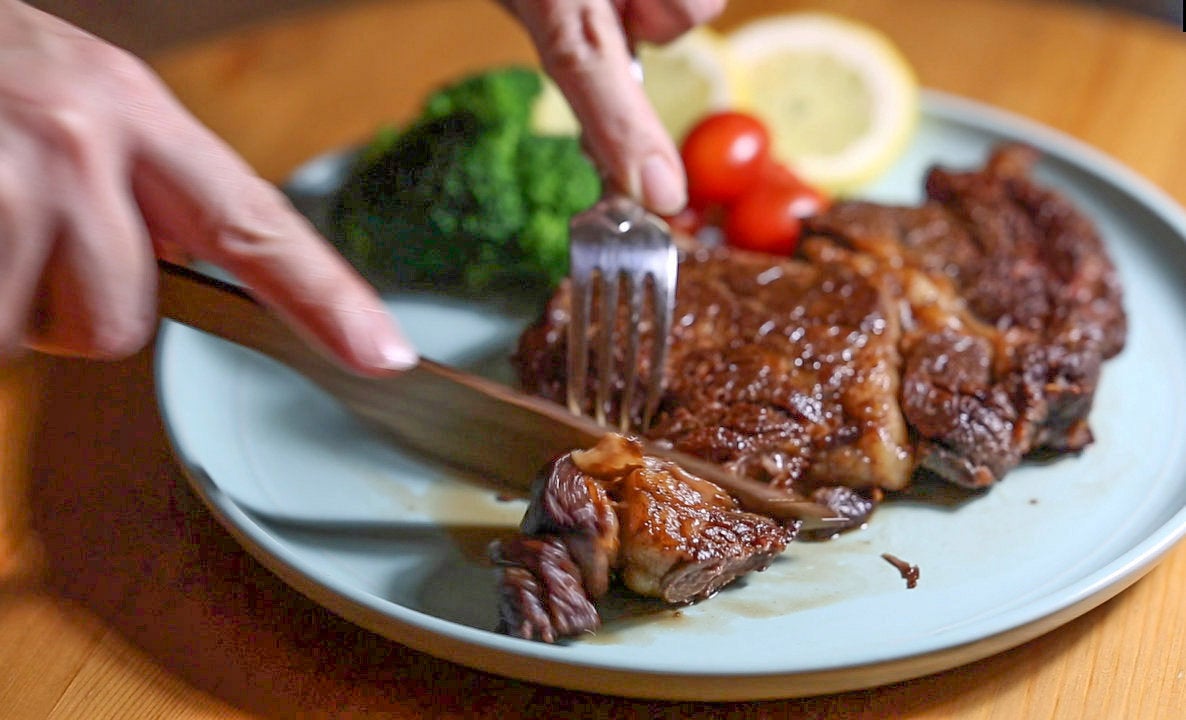Sustainable wooden knife cuts through steak ‘easily’ and is three times sharper than stainless-steel
The blade could be better for the environment than knives currently on the market

Your support helps us to tell the story
From reproductive rights to climate change to Big Tech, The Independent is on the ground when the story is developing. Whether it's investigating the financials of Elon Musk's pro-Trump PAC or producing our latest documentary, 'The A Word', which shines a light on the American women fighting for reproductive rights, we know how important it is to parse out the facts from the messaging.
At such a critical moment in US history, we need reporters on the ground. Your donation allows us to keep sending journalists to speak to both sides of the story.
The Independent is trusted by Americans across the entire political spectrum. And unlike many other quality news outlets, we choose not to lock Americans out of our reporting and analysis with paywalls. We believe quality journalism should be available to everyone, paid for by those who can afford it.
Your support makes all the difference.A blade carved from wood cuts through steak like butter and is around three times sharper than a stainless-steel dinner knife.
It is made using a new hardening process which makes wood 23 times stronger than usual - and could be better for the environment, say scientists.
Today, the sharpest knives on the market are made from steel or ceramic, both man-made materials, which must be forged in a furnace under extreme temperatures.
But now researchers in the United States have come up with an alternative by making wood as hard as steel or ceramic without the astronomically high heat.
Senior author Professor Teng Li at the University of Maryland said: “The knife cuts through a medium-well done steak easily, with similar performance to a dinner table knife.
“Afterwards, the hardened wood knife can be washed and reused, making it a promising alternative to steel, ceramic, and disposable plastic knives.”
While wood processing techniques like steaming or compression have been around for centuries, they have not been able to match the strength of man-made materials like steel or ceramics until now.
Professor Li said: “When you look around at the hard materials you use in your daily life, you see many of them are man-made materials because natural materials won’t necessarily satisfy what we need.
“Cellulose, the main component of wood, has a higher ratio of strength to density than most engineered materials, like ceramics, metals, and polymers, but our existing usage of wood barely touches its full potential.”
But because just 40 to 50 per cent of wood is made of cellulose, with the rest consisting of a binder - hemicellulose and lignin, its strength has fallen short.
To remedy this, the researchers developed a technique to remove the wood’s weaker components without damaging the cellulose skeleton.
Professor Li said: “It’s a two-step process.
“In the first step, we partially delignify wood.
“Typically, wood is very rigid, but after removal of the lignin, it becomes soft, flexible, and somewhat squishy.
“In the second step, we do a hot press by applying pressure and heat to the chemically processed wood to densify and remove the water.”
After the material has been carved into the desired shape, it is coated with a mineral oil.
This preserves the knife’s sharpness during use and when washed in the sink or dishwasher.
The researchers examined their creation under the microscope to determine the source of its strength.
Professor Li said: “The strength of a piece of material is very sensitive to the size and density of defects, like voids, channels, or pits.
“The two-step process we are using to process the natural wood significantly reduces or removes the defects in natural wood, so those channels to transport water or other nutrients in the tree are almost gone.”
The process can also be used to make wooden nails, which are as sharp as conventional steel ones but have the added benefit of being rust resistant.
These could be used to hammer three boards together without any damage to the nails, the researchers demonstrated.
The process could also potentially be more environmentally friendly than manufacturing other man-made materials.
For example, the first-step requires boiling the wood in a bath of chemicals to 100 degrees celsius, whereas the process to make ceramics requires heating materials to a few thousands degrees.
The chemicals could then be reused to make another batch of ultra-hard wood to help minimise waste, the researchers say.
Professor Li said: “In our kitchen, we have many wood pieces that we use for a very long time, like a cutting board, chopsticks, or a rolling pin.
“These knives, too, can be used many times if you resurface them, sharpen them, and perform the same regular upkeep.”
The findings were published in the journal Matter.
SWNS
Join our commenting forum
Join thought-provoking conversations, follow other Independent readers and see their replies
Comments